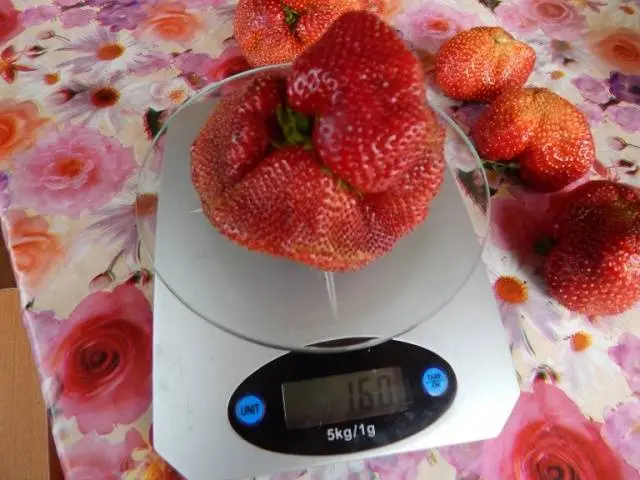Contents
Among the many varieties of strawberries or garden strawberries, there are both varieties of domestic production and those that have foreign roots. Since the 90s of the last century, numerous imported varieties, mainly from Holland, Spain and Italy, have filled the berry market and gained such popularity that often under their guise you can find only fakes that have nothing to do with true varieties. But even many real varieties from Southern Europe and America are poorly adapted in terms of their growing conditions to the climate. At best, the harvest obtained from them does not correspond to the declared characteristics. In the worst case, the plants simply freeze or disappear for other reasons.
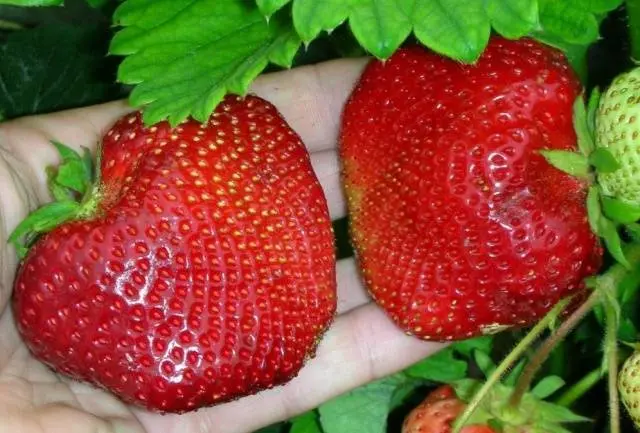
Strawberry seedlings from Japan, a country that is much closer to Our Country in many climatic characteristics, behave somewhat differently. Throughout the world, it is Japanese strawberries that are considered the most large-fruited, and, most importantly, having outstanding taste characteristics. After all, a large-sized berry is rarely truly sweet, and in varieties of Japanese selection, the taste of the berry is indeed dessert.
Strawberry Tsunaki, a description of the variety and a photo of which you can find in the article, leaves mostly rave reviews about itself. However, there are still not very many people who grew it, since this variety appeared in the vastness of Our Country relatively recently. Many even believe that such a variety does not exist at all, as well as varieties similar to it Chamora Turusi, Kipcha, Kiss Nellis and others, presumably of Japanese selection.
Variety description and history
Indeed, the origins of the Tsunaki strawberry variety are lost in the fog. Moreover, even the slightest mention of a strawberry variety with that name was not found on Japanese and English-language sites. In contrast, for example, from varieties under the names: Aiberi, Amao, Princess Yayoi and others.

Nevertheless, a strawberry variety called Tsunaki with giant sweet berries continues to exist and is grown in various parts of Our Country by both ordinary summer residents and professional farmers. Another thing is that many large-fruited varieties are really similar to each other in their characteristics and differ mainly in terms of ripening and, possibly, in the taste of berries. But, before moving on to specific reviews of people growing Tsunaki strawberries on their plots, one should still dwell in more detail on the description of the variety and its characteristics.
It is generally accepted that in the entire history of world breeding, Tsunaki strawberries serve as an example of one of the most large-fruited and productive varieties.
The appearance of the bush is indeed admirable and can serve as a benchmark for many varieties of strawberries. Bushes have a powerful growth force – in height and width, as a rule, they are twice the traditional and even remontant strawberry varieties.
Having planted such a giant on your site, you will involuntarily expect giant berries and a good harvest from him. Both peduncles and mustaches are distinguished by their considerable thickness, from 0,5 to 1 cm in diameter. As many gardeners say – “thick as a pencil.”
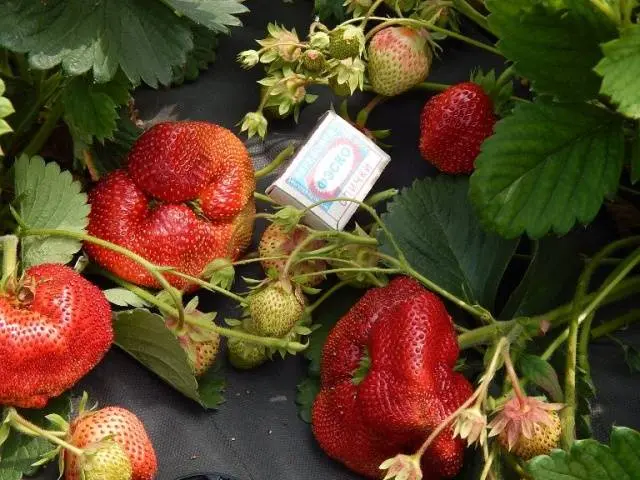
On the Tsunaki strawberry bushes there are many leaves, also of very large sizes. It is enough just to note the fact that their number is enough to reliably cover the bushes for the winter and save them from frost – in winter, and berries from sunburn – in summer.
In plants of this variety, the root system develops very powerful and strong, which makes it possible for them to endure short-term drought and develop significant resistance to frost.
According to reviews, the Tsunaki strawberry variety winters well without any shelters both in central Our Country, in Belarus, and in the Urals, and in the Far East.
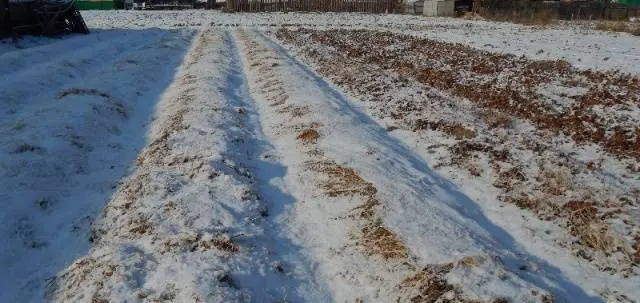
Strawberries Tsunaki belongs to the middle-late varieties in terms of ripening – the berries ripen around the middle of summer. Interestingly, even if the berries have not yet completely colored and the flesh has a light pink or even white color in places, then it still tastes sweet, dessert, not watery.
The yield of the variety is promising – on average, 1,5-1,8 kg of berries are harvested from one bush. This strawberry, although it belongs to the varieties of a short day, that is, it bears fruit only once a year, can also be grown in greenhouse conditions. Under such conditions, with appropriate intensive care, the yield from one bush can reach up to three kilograms.
Strawberry Tsunaki, having a large size, develops and grows rather slowly and does not at all belong to early-growing varieties. For the first year after planting, it does not make sense to expect a large harvest from it.
But this strawberry can grow in one place quietly for five to six years, then it is desirable to rejuvenate the plantation. In the first years after planting, the variety produces a large number of mustaches, which take root, although well, but for quite a long time. They should be used to propagate Tsunaki strawberries. Since with age, the formation of mustaches slows down and their number decreases.
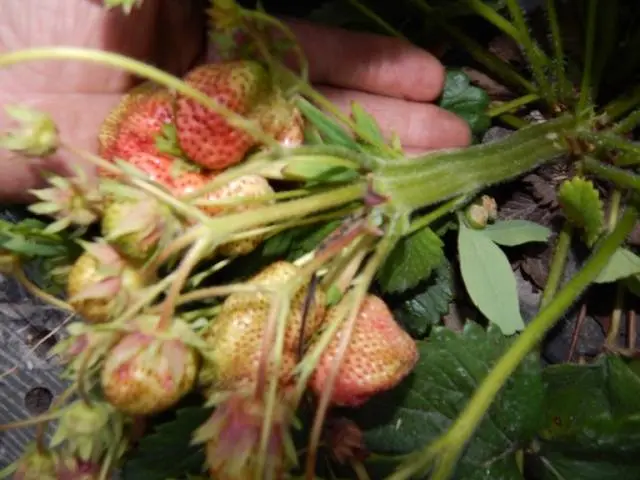
Resistance to major strawberry diseases in this variety is average. Gray rot is mainly affected by dense plantings and when grown without mulching.
Characteristics of berries
Strawberries are undoubtedly grown for their sumptuous berries, and Tsunaki is no exception. The fruits of this variety are characterized by the following characteristics:
- The berries are gigantic in size – up to 120-130 grams. The very first berries on the bushes grow the largest. In diameter, the berries can reach 7-8 cm.
- By the end of fruiting, they, of course, become somewhat smaller in size, but you still can’t call them small – on average, the weight of one berry is 50-70 grams.
- The color of the berries is bright red, with a shiny surface, inside they are even darker red.
- The shape of the fruit may not be the most beautiful and even – they are rather flattened, have characteristic scallops along the tops. Later berries may be more rounded, but bumps are still present.
- However, for some, the unsightly shape of the berries does not affect their taste in any way – the pulp is dense and juicy at the same time. Unlike many other large-fruited varieties, the taste has a muscat flavor along with a pronounced strawberry tinge.

- Berries can hold well on the bushes and not fall off, despite their considerable weight and size.
- Despite their large size, the berries are quite hard and dense, so they are well stored and transported.
- The purpose is more than universal. Tsunaki strawberries are great for freezing, because after defrosting they completely retain not only their shape, but also their unique taste and aroma.
- Of course, Tsunaki strawberries are very good for fresh consumption, and very tasty preparations for the winter are obtained from it: compotes, jams, marshmallows, marmalades and other yummy.
Reviews of gardeners and summer residents
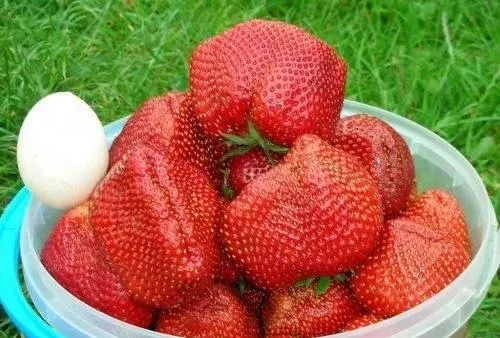
The Tsunaki strawberry variety has become widespread in the Far East, possibly due to its territorial proximity to the Japanese islands. But it is also grown in the Krasnodar Territory, and in Belarus and is in great demand everywhere because of the excellent characteristics of the berries.
Conclusion
Strawberry Tsunaki belongs to super-large-fruited varieties, without losing either in taste, or in yield, or in frost resistance. Therefore, it will be of interest to a large number of summer residents and gardeners. Moreover, unlike many remontant varieties, its plantation can be planted for many years.










